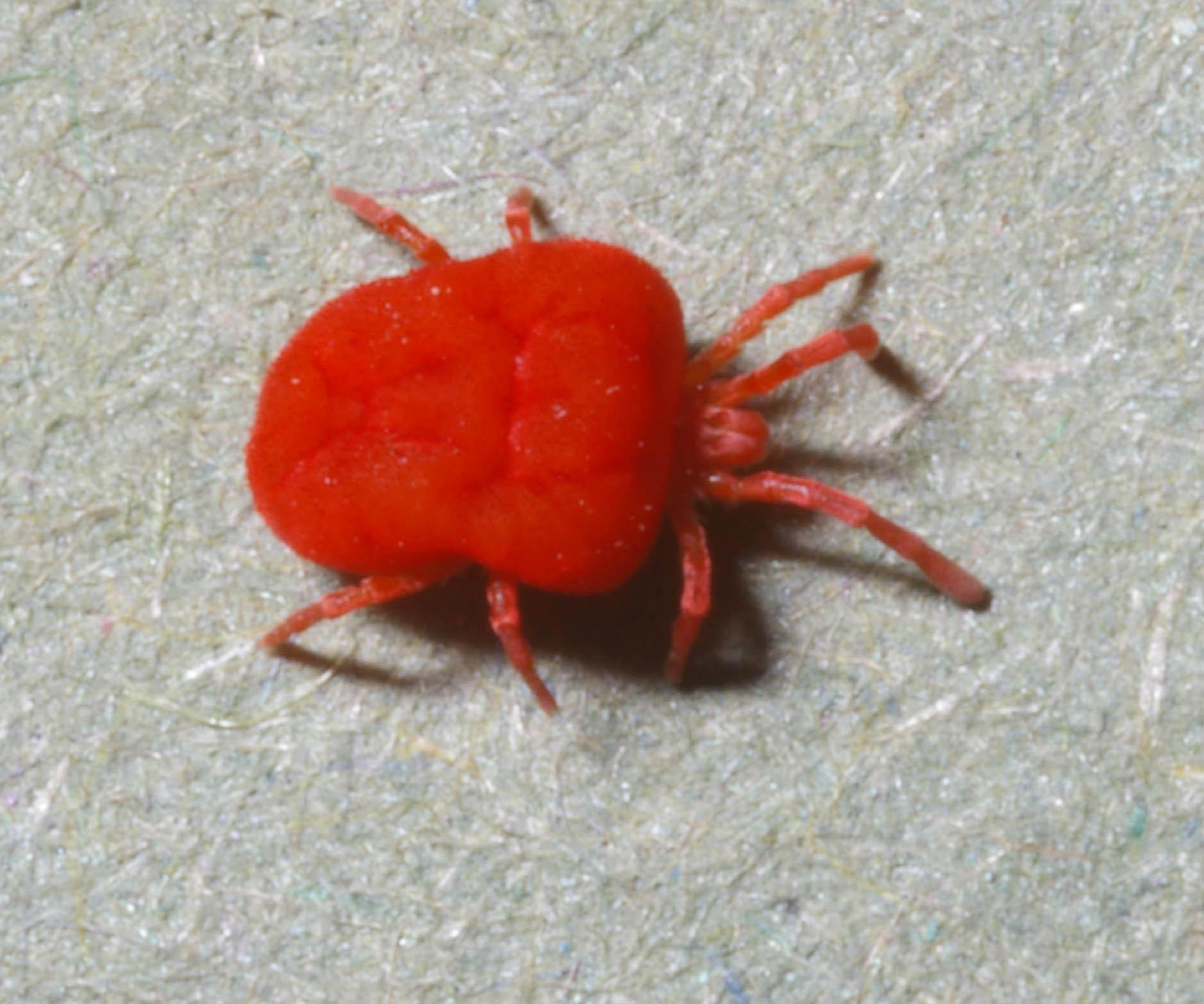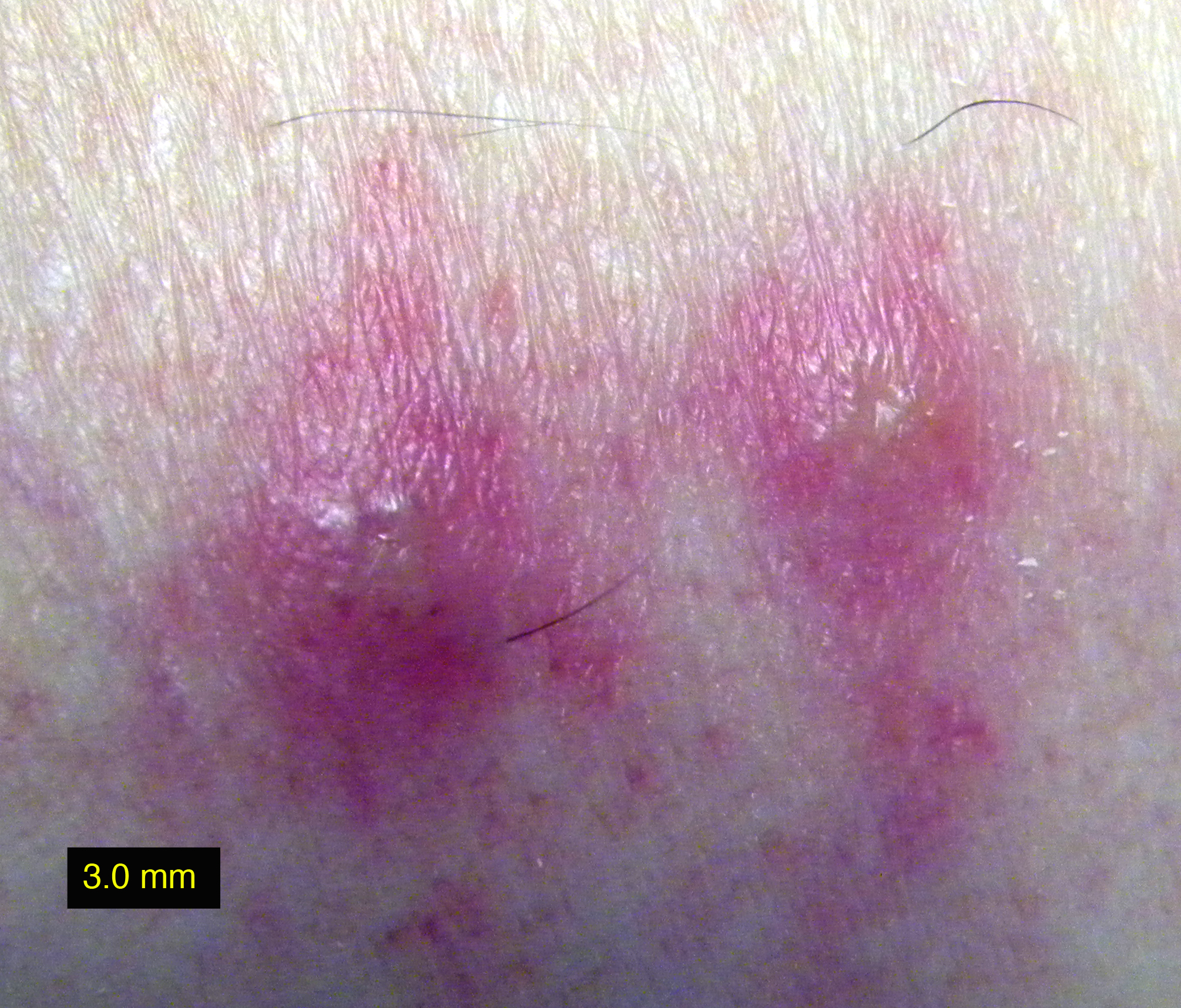Trombiculidae
Enlarge text Shrink text- Syn. liv. org.:v. 2, p. 130 (Trombiculidae; trombiculids. Superfamily Trombidioidea, suborder Prostigmata, order Acariformes. Trombiculids are most closely related to Leeuwenhoekiidae)
- Vercammen-Grandjean, P.H. The chigger mites of the world (Acarina: Trombiculidae & Leeuwenhoekiidae), 1975.
Trombiculidae (), commonly referred to in North America as chiggers and in Britain as harvest mites, but also known as berry bugs, bush-mites, red bugs or scrub-itch mites, are a family of mites. Chiggers are often confused with jiggers – a type of flea. Several species of Trombiculidae in their larva stage bite their animal host and by embedding their mouthparts into the skin cause "intense irritation", or "a wheal, usually with severe itching and dermatitis". Humans are possible hosts. Trombiculidae live in forests and grasslands and are also found in the vegetation of low, damp areas such as woodlands, berry bushes, orchards, along lakes and streams, and even in drier places where vegetation is low, such as lawns, golf courses, and parks. They are most numerous in early summer when grass, weeds, and other vegetation are heaviest. In their larval stage, they attach to various animals, including humans, and feed on skin, often causing itching. These relatives of ticks are nearly microscopic, measuring 400 μm (1/60 of an inch) and have a chrome-orange hue. There is a marked constriction in the front part of the body in the nymph and adult stages. The best known species of chigger in North America is the hard-biting Trombicula alfreddugesi of the Southeastern United States, humid Midwest and Mexico. In the UK, the most prevalent harvest mite is Neotrombicula autumnalis, which is distributed through Western Europe to Eastern Asia. Trombiculid mites go through a lifecycle of egg, larva, nymph, and adult. The larval mites feed on the skin cells of animals. The six-legged parasitic larvae feed on a large variety of creatures, including humans, rabbits, toads, box turtles, quail, and even some insects. After crawling onto their hosts, they inject digestive enzymes into the skin that break down skin cells. They do not actually "bite", but instead form a hole in the skin called a stylostome and chew up tiny parts of the inner skin, thus causing irritation and swelling. The itching is accompanied by red, pimple-like bumps (papules) or hives and skin rash or lesions on a sun-exposed area. For humans, itching usually occurs after the larvae detach from the skin. After feeding on their hosts, the larvae drop to the ground and become nymphs, then mature into adults, which have eight legs and are harmless to humans. In the postlarval stages, they are not parasitic and feed on plant material. The females lay three to eight eggs in a clutch, usually on a leaf or among the roots of a plant, and die by autumn.
Read more on Wikipedia >
 Topic
Topic







